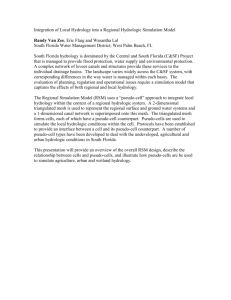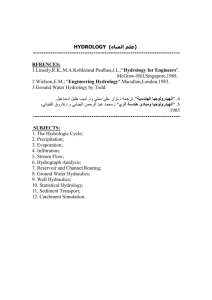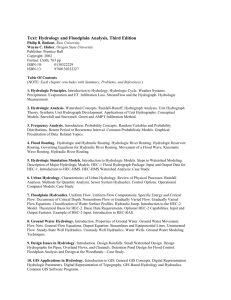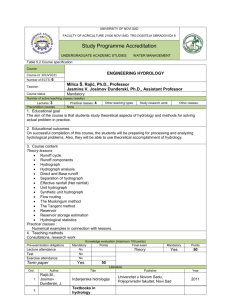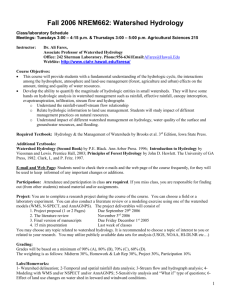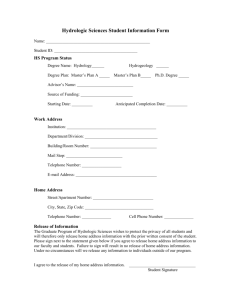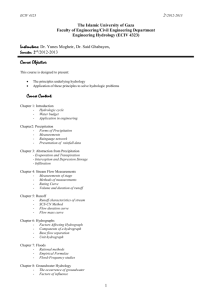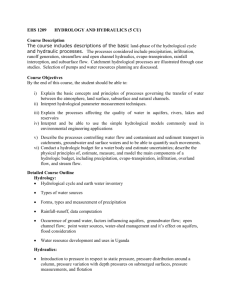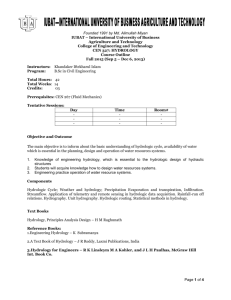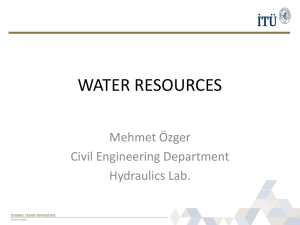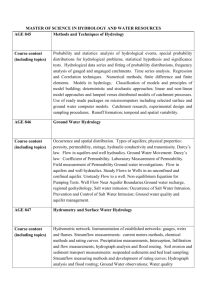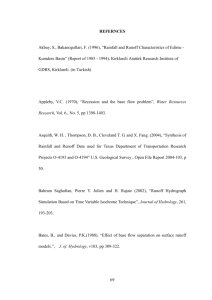Name of Course Engineering Hydrology Course Code Name(s) of
advertisement
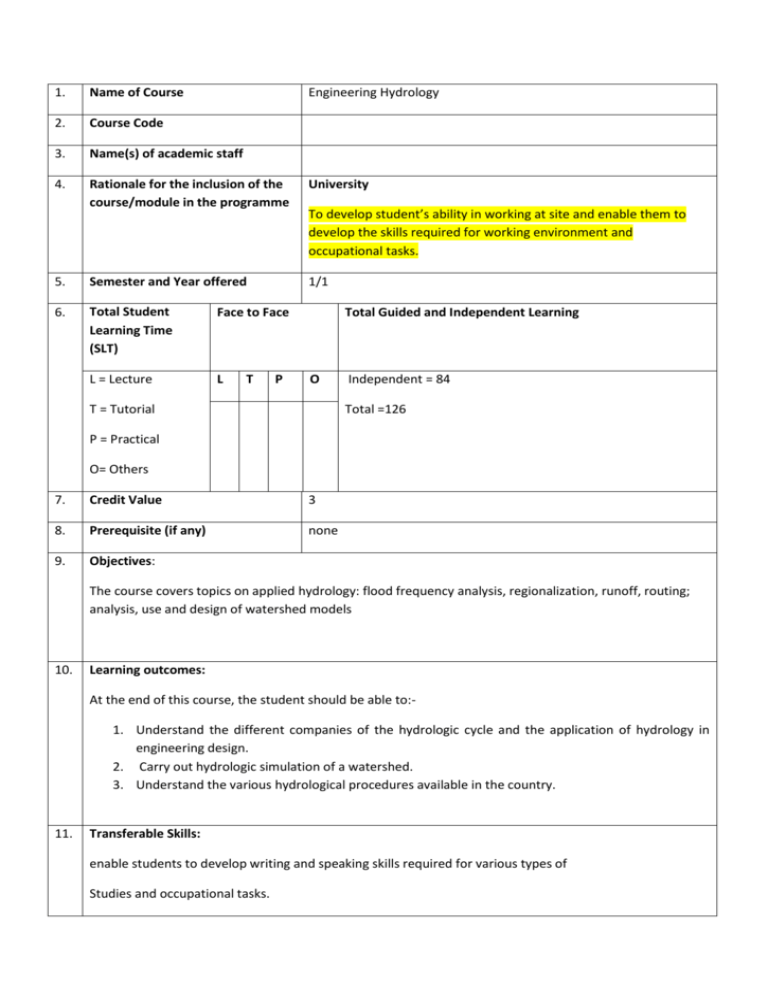
1. Name of Course Engineering Hydrology 2. Course Code 3. Name(s) of academic staff 4. Rationale for the inclusion of the course/module in the programme University 5. Semester and Year offered 1/1 6. Total Student Learning Time (SLT) Face to Face L = Lecture L T P To develop student’s ability in working at site and enable them to develop the skills required for working environment and occupational tasks. Total Guided and Independent Learning O T = Tutorial Independent = 84 Total =126 P = Practical O= Others 7. Credit Value 3 8. Prerequisite (if any) none 9. Objectives: The course covers topics on applied hydrology: flood frequency analysis, regionalization, runoff, routing; analysis, use and design of watershed models 10. Learning outcomes: At the end of this course, the student should be able to:1. Understand the different companies of the hydrologic cycle and the application of hydrology in engineering design. 2. Carry out hydrologic simulation of a watershed. 3. Understand the various hydrological procedures available in the country. 11. Transferable Skills: enable students to develop writing and speaking skills required for various types of Studies and occupational tasks. 12. Teaching-learning and assessment strategy Teaching-learning and assessment strategy A variety of teaching and learning strategies are used throughout the course, including: Classroom lessons. Lectures and Power Point presentations Laboratory sessions: Practice exercises brainstorming; student-Lecturer discussion collaborative and co-operative learning; Independent study. Assessment strategies include the following: Ongoing quizzes Midterm tests Performance Assessment (Participation, project, Assigned exercises) Lecturer Observation 13. Synopsis: 14. Mode of Delivery: 15. Classroom lessons. Lectures and Power Point presentations Site visit : Practice exercises Assessment Methods and Types: The assessment for this course will be based on the following: Coursework 40% Quizzes 10% Assignments 10% Mid-Semester Exam 20% Final Examination 60% Total 16. 100% Mapping of the course/module to the Programme Aims A1 A2 A3 A4 A5 A6 A7 A8 A9 A10 A11 A12 LO9 LO10 LO11 LO12 17. Mapping of the course/module to the Programme Learning Outcomes LO1 LO2 LO3 LO4 LO5 LO6 LO7 LO8 Content outline of the course/module and the SLT per topic SLT Stream flow and Hydrograph Analysis: Estimation of Runoff Topic 4 Topic 3 Topic 2 Topic 1 Introduction to engineering hydrology and its application to civil engineering Hydrology cycle 6 Surface flow, components of hydrograph, groundwater recession, separation techniques, time of hydrograph, basic lag, time of concentration, unit hydrograph development, derivation of unit hydrograph, S-Hydrograph, S-Hydrograph and Lagging methods. Matric method, synthetic method, Cylinder method, SCS method, Gray method, simulation methods in hydrology. Probability in Hydrology Statistical and probability approaches to runoff determination, Frequency analysis, Gumble, Pearson Flood probability, precipitation probability, plotting positions. Hydrologic and Hydraulic Routing Hydrologic river, reservoir routing by storage indication method; hydrologic watershed routing. Hydraulic reservoir routing, hydraulic watershed routing. Groundwater Hydrology Flowlines, types of aquifers, unconfined and confined steady radial flow in aquifers, well fields, method of images, unsteady flow, leaky equifers, partially penetrating wells, salt water intrusion. Groundwater basin development. Subsidence. Specific gravity, specific yield. Hydrologic synthesis and simulation, major hydrologic simulation models, continuos streamflow simulation model studies, rainfallrunoff, event simulation models, groundwater simulation, and hydrologic simulation application. Urban and Small Watershed Hydrology Peak flow formula for urban and small watersheds, urban runoff models, land use effects. T Total L Indep. Details Topic 5 18. Application of Hydrology Topic 6 Introduction to various hydrological procedures. Estimation of Design Rainstorm, magnitude and frequency of floods in Peninsular Malaysia, Rational Method of flood estimation for rural catchments, stage discharge curves, design flood hydrographs estimation for rural catchment in Malaysia. Magnitude and frequency of low flows in Peninsular Malaysia, estimation storage draft rate characteristics for rivers in Peninsular Malaysia. River discharge measurement by current meters; regionalization of flood peak relations. Total 19. Main references supporting the course Additional references supporting the course 20. Other additional information All materials will be available to the students in the library.
